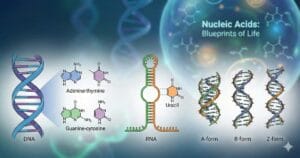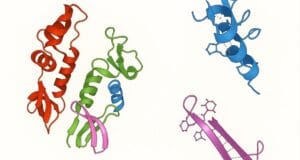
COMPETITIVE EXAM MCQs SERIES of ENVIRONMENTAL SCIENCE for UGC-NET/JRF, SLET, ARS, GATE, and other entrance tests – Environmental Geosciences – Hydrogeology and Hydrology.
Syllabus Outline
- Classification and characteristics of aquifers (e.g. confined, unconfined, and semi-confined) and aquitards.
- Groundwater Flow (e.g. Darcy’s law and groundwater flow equations, groundwater flow patterns and gradients).
- Factors influencing hydrology and hydrogeology.
- Groundwater Exploration and Well Hydraulics (e.g. pumping tests, groundwater pollution pathways and transport processes).
- Monitoring and assessment of groundwater quality.
- The hydrological cycle and its components (e.g. precipitation, evaporation, transpiration and runoff)
- Streamflow measurement and analysis.
- Data collection and analysis techniques in hydrology.
This quiz contains the concept-based most frequently asked 25 MCQs of “Environmental Geosciences – Hydrogeology and Hydrology“. Each question has a single correct or most appropriate answer.
*****
1. The process by which water moves vertically downward from the soil surface to groundwater is called:
a) Recharge
b) Infiltration
c) Runoff
d) Permeability
2. What is the term for the boundary between the saturated and unsaturated zones in an aquifer?
a) Water table
b) Vadose zone
c) Aquiclude
d) Capillary fringe
3. The concept of hydrological connectivity in watershed management refers to:
a) The interconnectedness of surface water and groundwater systems
b) The efficiency of irrigation systems in agricultural fields
c) The degree to which water is retained in the soil
d) The relationship between precipitation and evapotranspiration
4. What is the primary cause of spring tides?
a) Gravitational pull of the moon and sun
b) Earth’s tilt on its axis
c) Seismic activity
d) Atmospheric pressure
5. Which of the following methods is commonly used for determining the hydraulic conductivity of an aquifer in the field?
a) Permeability tests
b) Pumping tests
c) Grain size analysis
d) Slug tests
6. Which geological process is responsible for the formation of karst topography?
a) Erosion by wind
b) Seismic activity
c) Glaciation
d) Chemical weathering of limestone
7. What is the term for the water movement through fractures and fissures in rock formations?
a) Preferential flow
b) Seepage flow
c) Matrix flow
d) Intergranular flow
8. Assertion (A): Porosity is a critical parameter affecting the storage and movement of groundwater in aquifers.
Reasoning (R): Porosity represents the volume percentage of void space in a rock or sediment that determines its capacity to store and transmit water.
a) Both A and R are true, and the R is the correct explanation of the A.
b) Both A and R are true, but the R is NOT the correct explanation of the A.
c) A is true, but the R is false.
d) A is false, but the R is true.
9. What is the significance of the MODFLOW software package in groundwater modelling?
a) It analyzes groundwater quality parameters.
b) It is used for visualizing groundwater flow patterns.
c) It simulates fluid flow and transport processes in porous media.
d) It calculates the hydraulic conductivity of aquifers.
10. Assertion (A): Preferential flow pathways in the subsurface often exacerbate Groundwater contamination.
Reasoning (R): Preferential flow pathways can bypass natural filtration processes, allowing contaminants to travel more rapidly and extensively through aquifers.
a) Both A and R are true, and the R is the correct explanation of the A.
b) A is true, but the R is false.
c) A is false, but the R is true.
d) Both A and R are true, but the R is NOT the correct explanation of the A.
11. What is the primary challenge associated with the remediation of contaminated groundwater in fractured rock aquifers?
a) Low permeability of the aquifer
b) Limited availability of remediation technologies
c) Difficulty in accessing the contaminated zones
d) High cost of treatment
12. Which of the following is a characteristic of a confined aquifer?
a) The permeable layer is overlain and underlain by impermeable layers
b) Water is not under pressure
c) The water table intersects the ground surface
d) No impermeable layers present
13. The Hargreaves method is commonly used for estimating which parameter in hydrology?
a) Runoff coefficient
b) Infiltration rate
c) Potential evapotranspiration
d) Groundwater recharge
14. The Manning equation, commonly used to calculate open-channel flow, is based on which principle?
a) Bernoulli’s equation
b) Darcy’s law
c) Conservation of energy
d) Conservation of mass
15. Which of the following is a characteristic of a cone of depression in an aquifer?
a) Lowered water table
b) Increased hydraulic gradient
c) Rising water table
d) Increased hydraulic conductivity
16. Assertion (A): Artesian wells can produce water without pumping due to natural pressure.
Reasoning (R): Artesian conditions occur when groundwater is confined between impermeable layers and under sufficient hydrostatic pressure to rise to the surface without pumping.
a) Both A and R are true, but the R is NOT the correct explanation of the A.
b) A is false, but the R is true.
c) Both A and R are true, and the R is the correct explanation of the A.
d) A is true, but the R is false.
17. The concept of transmissivity in hydrogeology refers to:
a) The rate of groundwater flow through a unit width of an aquifer
b) The volume of water that an aquifer can store per unit area per unit change in hydraulic head
c) The ease with which water can flow through soil or rock
d) The rate of water movement through a unit area under a unit hydraulic gradient
18. What term describes the phenomenon where the curvature of the water table near pumping wells influences groundwater flow?
a) Well interference
b) Dupuit approximation
c) Flow net analysis
d) Cone of depression
19. The phenomenon of baseflow in stream hydrology refers to:
a) Flow contributed by groundwater discharge
b) Flow contributed by surface runoff
c) Flow contributed by precipitation
d) Flow contributed by snowmelt
20. Which of the following is NOT a type of precipitation gauge used in hydrological studies?
a) Snow pillow
b) Tipping bucket
c) Float gauge
d) Weighing gauge
21. The concept of stream order in hydrology refers to:
a) The velocity of flow in a river channel
b) The number of tributaries in a river network
c) The classification of rivers based on discharge
d) The size of the watershed area
22. Which technique is commonly used for delineating groundwater flow paths and contaminant transport in fractured rock aquifers?
a) Ground-penetrating radar
b) Electrical resistivity imaging
c) Tracer tests
d) X-ray fluorescence spectroscopy
23. Which geological feature is most likely to contain an aquifer?
a) Schist
b) Basalt
c) Sandstone
d) Granite
24. Which of the following is NOT a method for measuring groundwater level?
a) Well sounder
b) Pressure transducer
c) Infiltration gauge
d) Piezometer
25. Which of the following is a characteristic of an artesian well?
a) Requires a pump for extraction
b) Water level above ground surface
c) Low hydraulic gradient
d) Occurs in unconfined aquifers
*****
Previous: Geochemical Classification of Elements
Next: Natural Resources Exploration and Exploitation
References
- Trew, Cherylene E. S. (2018) Principles of Hydrogeology, Wiley, 2nd Edition.
- Fetter Jr., C.W. (2019) Applied Hydrogeology. Pearson. 5th Edition.
- Garg, S.K. (2017) Hydrology and Water Resources Engineering. Khanna Publishers. 1st Edition.
- Fitts, Charles R. (2013) Groundwater Science. Academic Press. 2nd Edition.
- Hendriks, Martin (2015) Introduction to Physical Hydrology. Oxford University Press. 3rd Edition.

